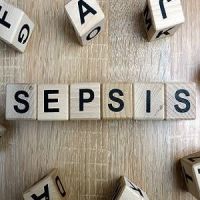Many patients near the end of life are subject to rapid response system (RRS) calls. A study was conducted in a large Sydney teaching hospital to identify a cutoff point that defines nonbeneficial treatment for older hospital patients receiving an RRS call, describe interventions administered, and measure the cost of hospitalisation.
"Identifiable risk factors clearly associated with poor clinical outcomes and death can be used as a guide to administer less aggressive treatments, including reconsideration of ICU transfers, adherence to NFR [not-for-resuscitation] orders, and transition to end-of-life management instead of calls to the RRS team," concludes the study published in The Joint Commission Journal on Quality and Patient Safety.
Many intensive interventions are delivered after activation of RRS calls, which are designed to identify and respond to seriously ill patients in acute hospitals. Often these frequently heroic medical interventions do not improve patient survival and instead prolong suffering and adversely affect the quality of death.
Less aggressive end-of-life (EOL) care has been found to be highly desirable to patients, and it is associated with a higher quality of life prior to death as well as better psychological outcomes for bereaved family members. Indeed, deployment of RRS teams can increase formal “comfort care only” orders at the EOL and can reduce patient distress.
This retrospective cohort study investigated trajectory and interventions administered to hospitalised patients in the three months prior to their in-hospital or postdischarge death. The cohort included 733 adult inpatients with data for the period three months before and after their last placed RRS call. Subgroup analysis of patients aged ≥ 80 years was conducted. Log-rank, chi-square, and t-tests were used to compare survival, and logistic regression was used to examine predictors of death.
Overall, 65 (8.9%) patients had a pre-existing not-for-resuscitation (NFR) or not-for-RRS order; none of those patients survived to three months. By contrast, patients without an NFR or not-for-RRS order had three-month survival probability of 71% (log-rank χ2 145.63; p < 0.001). Compared with survivors, RRS recipients who died were more likely to be older, to be admitted to a medical ward, and to have a larger mean number of admissions before the RRS. The average cost of hospitalisation for the very old transferred to the ICU was higher than for those not requiring treatment in the ICU (US$33,990 vs. US$14,774; p = 0.045).
"This study strongly indicates that, in the presence of a patient profile of old age (particularly ≥ 80 years), hospital admissions in the past three months, history of ≥ 2 hospital admissions, and an existing NFR or not-for RRS order, clinicians could step back and consider drawing the line for aggressive/nonbeneficial, futile management, as death in these cases is inevitable," study authors note. "These flags of irreversibly poor outcome (that is, death from natural causes) make it possible to rate individuals before they have their terminal cardiac/respiratory arrest to facilitate the EOL discussions and avoid the need for unilateral decision making by clinicians."
The study findings suggest that less aggressive interventions and stronger adherence to NFR orders are required in this near the end of life patient subpopulation before a time of crisis. The authors also say cost-effectiveness of EOL discussions before RRS calls is worth investigating, as are determinations of the source(s) of instigation for futile interventions.
Image Credit: Leap Kye via Flickr
References:
Cardona M et al. (2018) Who Benefits from Aggressive Rapid Response System Treatments Near the End of Life? A Retrospective Cohort Study. Jt Comm J Qual Patient Saf. 44(9):505–513 DOI: https://doi.org/10.1016/j.jcjq.2018.04.001
Latest Articles
end-of-life care, rapid response system, RRS
Many patients near the end of life are subject to rapid response system (RRS) calls. A study was conducted in a large Sydney teaching hospital to identify a cutoff point that defines nonbeneficial treatment for older hospital patients receiving an RRS cal


























